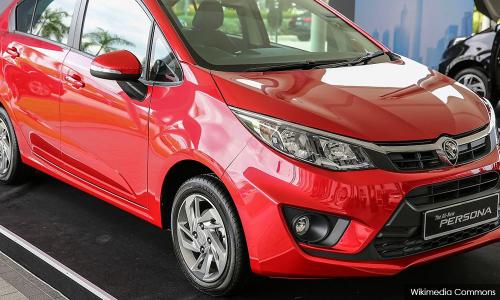LETTER | Why is it such an expensive hassle to change car ownership?
LETTER | I am a senior citizen. During my lifetime in the course of my work and also as a private individual, I have bought and sold several cars.
It used to be quite easy before. The buyer and seller simply signed a JPJ form. The buyer then took the form to JPJ and a new registration card was issued in the name of the new owner. If there was a charge, it used to be quite negligible. The important point to make is that the transfer was simply done without any hassle.
But things seemed to have changed drastically now. Changed in a way that makes it extremely difficult for private citizens to buy or sell cars. Let me explain.
The car that is going to be sold has to be first inspected by Puspakom. The reason given is that the government apparently wants to make sure that no unauthorised modifications have been made to the car that is being sold.
After the inspection by Puspakom has been successfully done and after obtaining a clearance document from Puspakom, the buyer and the seller are supposed to go to JPJ. They have to be present personally for JPJ to obtain the thumbprints of both seller and buyer. It is only after this is done that a new registration card for the buyer will be issued.
There are long waiting periods if one chooses to follow this course. Because this process of vehicle ownership transfer has now become complex and time-consuming, I was advised to seek the services of a “runner” to facilitate this transaction. And this is what I discovered.
There are charges for this service by the “runner” which appear to be standard. To get an appointment for inspection at Puspakom is not easy and the seller has to be present. If a private citizen seeks an appointment it can take a long time. But an appointment for this inspection can be easily obtained by the runner. The charge is RM180 (RM30 for Puspakom and RM150 for the runner).
Both the buyer and the seller are then required to go to the JPJ office to have their thumbprints taken before the JPJ will agree to have the ownership transferred to a new registration card. Again the runner is able to get a quick appointment for this purpose. The charge by the runner for the service at the JPJ office is RM250.
If the buyer or the seller happens to be elderly or disabled, the “runner” is willing to go to the house of the buyer or the seller to take the thumbprints for the JPJ. The charge for this is RM500.
So it can be seen that for the sale of a car from an elderly citizen to a buyer, the total charge can amount to Rm680 (Rm180 + RM500).
For most Malaysians who own cars, paying RM680 for a transfer like this is too high. But if the “runner” can pick up documents and obtain the necessary requirements for the transfer without the buyer or the seller having to hang around and wait at Puspakom and JPJ offices, this may be acceptable. But you never know if there could be additional charges.
But I cannot see any reason why JPJ has made it necessary for Puspakom to inspect vehicles that are going to be sold. And for thumbprints to be given at JPJ. Puspakom is already very busy doing its usual work. This additional workload is I think unnecessary and an inconvenience to citizens.
Let the buyer of the secondhand car seek inspection by Puspakom if he wants to be sure of the quality of the car he is buying. It should be optional.
It is reported that there are 30 million registered vehicles in this country. It is reasonable to assume that buying and selling of private cars occur by the thousands every day. Inspections at Puspakom and the need for obtaining thumbprints from buyer and seller at JPJ is unnecessary, a nuisance for the public and unnecessarily burdens Puspakom and JPJ.
So this is my appeal to Wee Ka Siong, the minister of transport:
Let the buying and selling of private motor vehicles be like it was before with the filling of one JPJ form to be presented to JPJ. With today’s digital technology, what JPJ seems to be doing appears to be old and obsolete. It inconveniences the public.
The views expressed here are those of the author/contributor and do not necessarily represent the views of Malaysiakini.
RM12.50 / month
- Unlimited access to award-winning journalism
- Comment and share your opinions on all our articles
- Gift interesting stories to your friends
- Tax deductable
